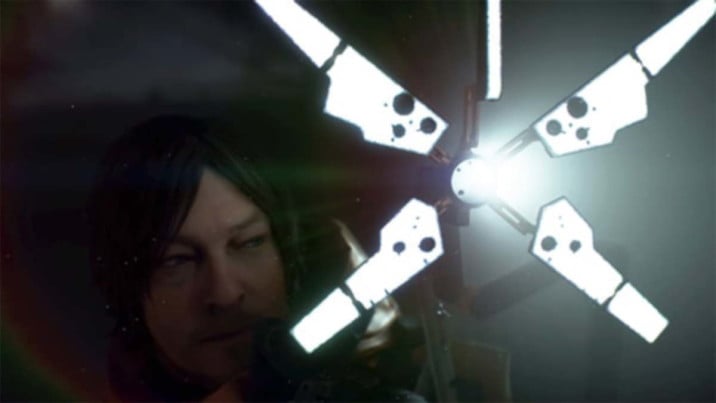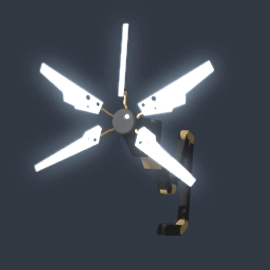Scourge of Gold



OUT OF CHARACTER INFORMATION
- Intent: To create a combat utility droid for elite soldiers and special agents alike.
- Image Source: [X] [X] [X]
- Canon Link: N/A
- Permissions: Technoid Permissions
- Primary Source: N/A
- Manufacturer: AvCorp™
- Affiliation: Closed-Market
- Model: STRND-series ODRDK-6000 (Droid name examples: RD-7, OD-9, DK-4, etc.)
- Modularity: Yes. Light 'wing' shape and color can be customized.
- Production: Mass-Produced
- Material:
- Armor Composite
- Hyper-reflective Lens Composite
- Titanium Skeleton
- Electronic Components
- Computing Components
- Classification: Second Degree (Class Two)
- Weight: Very Light
- Height: Very Small
- Movement: None. Attaches to the back of the user's shoulder.
- Armaments:
- Non-lethal Supercharged Taser
- Misc. Equipment:
- Sensor Package
- Personal Defense Package
- Deflector shield generator
- Dampener aerosol dispenser (Refined courenth and ves mixture)
- Personal Utility Package
- Resistances (Optional):
- Energy (And other Blaster type weapons): Average
- Kinetic: Low
- Lightsabers: None
- Sonic: Average
- EMP/ION: Very Low
- TCD DB-SR01x 'Powerslave' Droid Brain
- Long-range Bioscanners, tuneable to track and identify specific biosignatures over long distances.
- "All-purpose" Scanner (motion, metal, comms, droid, vehicle, cargo, minerals, terrain, navigational.)
- Electro-sensory Amplification: When connected to an apparatus with the same sensor and/or scanner capabilities, the STRND-series ODRDK-6000 acts as an amplifier, working in tandem with the device to increase the effective range and general efficiency of the sensors and scanners when used through the STRND-series ODRDK-6000 itself.
- Self-preservation Protocols: The STRND-series ODRDK-6000 is programmed to prioritize the wellbeing of itself and its operator. It will rarely act with total independence aside from taking the initiative to protect itself and/or the operator. Independent directional diverting of deflector shield power, deployment of aerosol, application of the taser, and constant advice and information reports about possible threats and safe plans-of-action calculated by the 'Powerslave' AI are some key features of the Self-preservation Protocols.
- Operator Dependence: The STRND-series ODRDK-6000 is incapable of independent movement and requires an attachment to an operator for locomotion. The droid has no binary vocoder and can indicate scans and information only through light patterns and through connected auxiliary apparatuses such as a visor HUD in a suit of armor, a personal computer, or other devices.
- Power Consumption: The STRND-series ODRDK-6000's small size means the room it has for a power supply is lacking. The on-board power supply is short-lived when operating at full efficiency. Connecting the STRND-series ODRDK-6000 to an external power supply such as armor with powered components, or a small hip or back-mounted battery is required for long periods of operation.
- Ion/EMP Sensitivity: The small size of the STRND-series ODRDK-6000 leaves little room for shielding the large density of technological components within, making the droid rather sensitive to targeted interference.
The STRND-series ODRDK-6000 was inspired by Astromech droids and the utility they provide to fighter pilots. Realizing the niche in the market that had yet to be filled, Darth Avernus and several AvCorp™ engineers made this project a top priority for some time. The design intends to provide specialized infantry personnel with a small, unintrusive, and lightweight droid that could provide them with supplementary tools and sensors as well as an 'assistant' AI.
Due to the rather flimsy nature of the base model, the ODRDK-6000 was made with mass production in mind to allow them to be easily replaced when destroyed or otherwise damaged beyond reasonable repair. This is a frequent occurrence, given that the droid's small frame does not lend itself well to durability, nor did it have much space for sufficient shielding from electromagnetic and ion interference. The base model also possesses a very dry and aloof personality to discourage attachments to form with the operator given that ODRDK-6000s don't often make it into veterancy when regularly used in the field.
The center 'eye' of the ODRDK-6000, as well as the top 'bar-wing' hold the bulk of the sensor apparatuses, with the four 'wings' are each outfitted with electronic components internally for sensor amplification, and a highly reflective crystal lens externally to amplify and process incoming visual data. The lenses also act as reflectors for the many lights installed in both the center eye and wings that are used for visual communication of status by color, and visibility assistance through different spectrums of light that adjust to the environment.
A small, collapsable scomp link and collapsible fusion cutter are both housed within the chassis 'head' directly behind the center eye and wings. The bulk of the electronic components are housed here as well, making the 'head' a vital and vulnerable part of the design. Damage to the head will significantly hinder if not totally disable the ODRDK-6000. The remainder of the electronic components are spread out along the 'neck' which has a less significant impact on overall operation when damaged unless severed outright.
Last edited:





